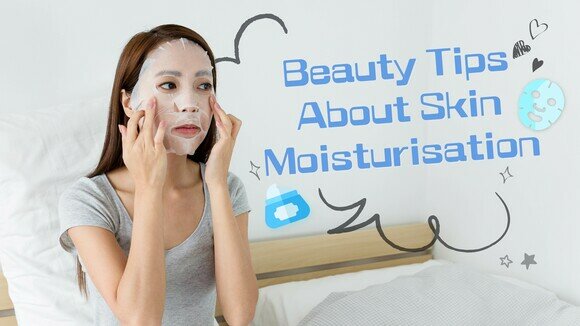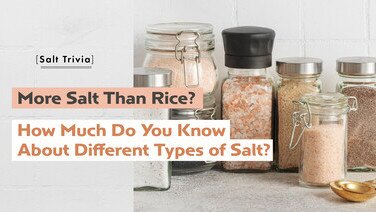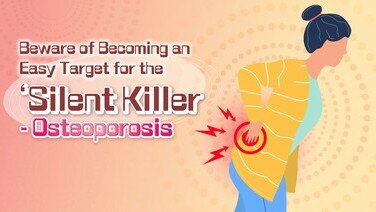1. Face creams
Watch the following videos to learn more:
https://www.youtube.com/watch?v=9pyV1OmA2Rk (Chinese only)
https://www.youtube.com/watch?v=6izXNO4deB4 (Chinese only)
What is the differences between day cream and night cream?
During the daytime, many beauty lovers customarily apply a moisturising face cream and a sunscreen product on their face, to be followed by foundation and other cosmetics, so day creams are usually lighter in texture. Night creams, on the other hand, are usually more nourishing with added properties such as whitening and anti-wrinkling.
A quick look at the ingredient list to find out the moisturising efficacy
A good moisturising face cream should contain components including humectants, emollients, and occlusive agents, which not only hydrating but also forming a protective film onto the skin surface to reduce moisture loss. When consumers purchase a moisturising cream, they should check whether the products contain the following ingredients:
a. Humectants
Humectants can help to absorb moisture from the dermis layer of the skin to the stratum corneum. The most common humectants are polyols which have small molecules and are soluble in water and oil, e.g., glycerin, propylene glycol, butylene glycol and sorbitol, which can assist in the absorption of water-soluble ingredients.
The moisturising efficacy of glycerin is particularly remarkable. The International Consumer Research & Testing (the ‘ICRT’) tested 48 moisturising face creams on the international market, and about half of the models could increase the moisture level of the stratum corneum by ≥30% after 4 weeks of continuous application. In more than 10 models, consumers could find glycerin in either the 2nd or 3rd position in the ingredient list, indicating its relatively high concentration in the formula.
In addition, urea, hyaluronic acid / sodium hyaluronate and sodium lactate are all good humectants. Hydrophilic polymers such as hydrolyzed proteins and hyaluronic acid can form a protective film on the skin surface to reduce moisture loss.
b. Emollients
Emollients can fill the open spaces in the skin cells and smooth out the skin surface, making the skin soft and improving its elasticity. Squalene, jojoba oil, vegetable oil and wax are some of the commonly used emollients.
c. Occlusive agents
Occlusive agents can form a protective film on the skin surface to reduce moisture loss. However, they may leave the skin feeling sticky and greasy after use. Commonly used occlusive agents include petroleum, paraffinum liquidum / mineral oils, silicone derivatives and lanolin.
d. High alcohol content = low moisturising efficacy?
Skin may become dry after prolonged contact with alcohol or alcohol denat. in high concentration. However, from the moisturising efficacy test, the Council found that certain products that contained a relatively high alcohol content (e.g., listed in the 3rd or 4th position of the ingredient list) could still achieve a good moisturising efficacy as long as their glycerin content occupied a higher position in the ingredient list.
In fact, alcohol plays multiple roles in skincare products, and alcohol in high concentration may have bactericidal effect. The existence of alcohol can make a cream feel less heavy on the skin after use. It may also act as a solvent, helping certain ingredients dissolve into the products or penetrate the skin surface. However, a product with high alcohol concentration may indeed irritate the skin and cause allergic contact dermatitis. Therefore, consumers who have had adverse reactions to alcohol-based skincare products should avoid face creams with high alcohol content. On the other hand, skincare products with low alcohol concentrations (less than 5%) are less likely to dry out the skin.
e. Products with cyclopentasiloxane scored lower in moisturising efficacy
Siloxane compound cyclopentasiloxane (D5) is a volatile silicone oil which makes skincare products easier to apply and the skin feeling smoother and more refreshing after use. D5 can form a protective film on the skin surface to reduce moisture loss. However, from the moisturising efficacy test, the Council found that certain models with D5 as an important ingredient generally had inferior moisturising efficacy if they did not contain glycerin or had glycerin listed in lower positions in the ingredient list.
For people with dry skin, as their skin already lacks of moisture, the use of D5 to prevent moisture loss may not be enough in improving the overall moisture level of the stratum corneum. Furthermore, D5 may also carry ecological impact if inappropriately released to the environment.
f. Allergens /endocrine disrupting chemicals
People with sensitive skin should pay special heed to fragrance allergens, preservatives and endocrine disrupting chemicals that are in the ingredient list:
Fragrance allergens | Including citral、citronellol、geraniol、limonene、linalool、eugenol、benzyl benzoate and farnesol. |
Formaldehyde/ formaldehyde-releasing substances | People who are allergic to formaldehyde should pay heed to substances such as DMDM hydantoin and 2-bromo-2-nitropropane-1,3-diol. |
Preservatives | Methylisothiazolinone (MIT) (which is banned in Europe), iodopropynyl butylcarbamate (IPBC) and long-chain parabens such as isopropyl- and isobutyl-parabens are endocrine disrupting chemicals that may affect chemical reactions inside the human body. |
Sunscreen | Ethylhexyl methoxycinnamate is a possible endocrine disrupting chemical. |
Gel vs. cream – which one is better?
Are you also confused by the foregoing question? According to the test results, the Council found no significant difference in moisturising efficacy between creams and gels.
Is the ‘24-hour hydration’ claim really possible?
Some products on the market claimed to have a ‘24-hour hydration’ effect, but some previous overseas tests found that the hydration effect of moisturising creams could not be effectively maintained for 24 hours. Besides, most people normally take a bath and wash their face within 24 hours and therefore will not apply a cream only once for the whole day, so consumers should not make a purchase decision based on this claim alone.
Are products advertised as "dermatologist tested or approved" more reliable?
Previously, the Council found that some skincare products which were labeled as "dermatologist tested or approved" or "hypoallergenic" still contained allergens. Therefore, consumers are advised against making purchase decisions solely based on these claims. As for skincare products that claim to be "paraben free ", it does not mean that these products do not contain other preservatives.
Is it normal to have a slight stinging sensation after using face cream?
If there is a slight stinging sensation on the skin at the initial stage of using a face cream, it may be due to dryness of skin tissue or minor inconspicuous skin damage. If this is the case, continue using the product and the sensation should gradually subside after a few days. However, if the pain intensifies or even a burning sensation develops, it may be due to the development of allergic reactions, and one should stop using the product immediately.
Pilling = bad quality?
Nowadays, a number of skincare products contain high molecular polymers such as hyaluronic acid, hydrolyzed collagen, carbopol, carbomer, acrylates / C10-30 alkyl acrylate crosspolymer, etc. These substances cannot be easily absorbed by the skin and form a thin film on the skin surface. Rubbing layers of skincare products and cosmetics on the face may cause pilling on the skin. Since the high molecular polymer film may prevent the skin from absorbing the ingredients of the skincare product, it is best to use these products as the last step in the skincare routine.
Is there a best time for moisturisation?
The ideal time to moisturise is after your daily cleansing routine. Gently dry the skin with a towel and apply the skincare product immediately afterwards while the skin is still moist. In general, follow the foregoing routine twice a day should suffice. On days when the skin is particularly dry or on certain dry patches, you may reapply moisturising cream as needed.
Let’s take a closer look at the causes of dry skin
In addition to prolonged exposure to dry conditions or the sun, the following factors may also contribute to continuous moisture loss:
Aging | As the estrogen level falls, sebum production will decrease and the stratum corneum will become thinner, thus weakening the skin's ability to retain moisture and making it dry. |
Inappropriate cleansing procedures | Using strong cleansing products, over-cleansing, or washing the face with piping-hot water may weaken the skin's protective layer, making it more prone to dryness. |
Bad habits | Having insufficient rest or drinking insufficient water can also make the skin look dull. Frequent alcohol consumption may also give rise to faster moisture loss as it raises the skin temperature and causes the skin capillaries to dilate. |
Therefore, consumers should pay attention to what causes their skin problems. If the dry skin is caused by cold weather and dry environment, then choosing a good moisturising product can generally improve the condition. However, if it is due to skin aging or prolonged exposure to the sun, using skincare products may only delay or alleviate the problem.
2. Moisturising masks
Let’s watch a short film and get some ideas: https://www.youtube.com/watch?v=jXMO-cn36eo&t=2s (Chinese only)
Sheet vs. Cream Mask: Which one should I choose?
Sheet moisturising mask may not be suitable for people with combination skin as it may promote the growth of acnes or fat granules on the oily parts of the skin while hydrating the dry parts. Using a cream mask can instead target the specific areas on the face to strengthen the moisturising effect.
Products containing hyaluronic acid = superior moisturising efficacy?
Hyaluronic acid is only a commonly used humectant, which moisturises by drawing moisture from the skin. The product’s moisturising efficacy will depend on the concentration of hyaluronic acid and the formula’s effectiveness in helping the skin to absorb the hyaluronic acid. The degree of absorption may also vary depending on individual skin types.
What kind of sheet mask texture is less allergenic?
In fact, allergic reactions to sheet mask materials rarely happen in daily life or clinical cases. The choice of material is generally based on personal preferences, such as the thickness, smoothness, coarseness and level of adherence. On the contrary, consumers should focus on product ingredients. Generally speaking, whitening and anti-aging masks are more likely to cause allergies. Consumers should also pay attention to whether the masks contain allergenic preservatives.
Daily usage may make the skin look worse?
For people with oily skin, daily usage may increase the chance of acnes and fat granules due to excessive replenishment of oil components. For people with eczema and sensitive skin, frequent usage of masks may increase the chance of skin allergies and make eczema conditions worse. Consumers should also check the recommended frequency of use on the packaging. Masks should not be used daily if the product description recommends usage only once or twice a week.
The longer the time, the better the result?
Quite the contrary! You should not leave the mask on the face for longer than the recommended duration. Otherwise, skin moisture will be drawn by the mask instead, causing an opposite effect.
To find out which models of face cream and moisturising mask have better moisturising efficacy, please refer to the articles ‘17 Moisturising Day Creams Tested to Distinguish Their Moisturising Efficacy’ (Chinese version only) and ‘Moisturising Face Masks Varied Considerably in Effects and Prices 7 Models Were Superior in Performance’ (Chinese version only), in issues #481 and #486 of CHOICE Magazine.









![[Handwashing Cold Knowledge] Debunking 4 common handwashing myths](/f/guide_detail/409326/376c212/43_4%E5%80%8B%E6%B4%97%E6%89%8B%E5%B8%B8%E8%A6%8B%E8%BF%B7%E6%80%9D_Eng.jpg)

